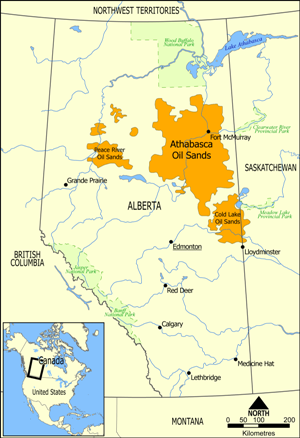
Researchers from the Unviersity of Alberta have detected heavy metals in air and water as a result of oil sands mining activity. Adler deWind reports from Canada.
Geoscientist Online 1 September 2010
Heavy metals, known to be toxic at low concentrations, are being discharged to air and water by oilsands mining and processing, according to University of Alberta (U of A) research findings published in the August 30 edition of the Proceedings of the National Academy of Sciences (PNAS).
The 13 elements identified include mercury, arsenic, lead, cadmium and several other metals known to be toxic at trace levels. Not surprising, says corresponding author David Schindler, given the huge amounts of many of the same elements that the industry has reported discharging, according to Environment Canada's National Pollutant Release Inventory.
"Given the large amounts of pollutants released, any monitoring program that cannot detect increases in the environment must be considered as incompetent" says Schindler. "The U of A study was deliberately designed to test claims by industry and Alberta politicians that all contaminants in the river are from natural sources.”
This included examining patterns of deposition of pollutants in snow and releases to water both near to, and remote from, industry.
"Rather than pollutants increasing continuously downstream in the river due to natural sources, as government has claimed, concentrations of the majority of toxins were always highest near sites of industrial activity" Schindler says.
He notes however that concentrations of many contaminants remained above background levels right up to the Athabasca Delta. Elevated concentrations were in Lake Athabasca, near Fort Chipewyan.
"The releases are in clear violation of section 36, subsection 3 of the Fisheries Act, which prohibits discharge of toxins in any quantity into fish-bearing waters."
Schindler says much of the debate over the impact of oil sands has been based on a combination of conjecture and propaganda, which has not been peer reviewed or published in recognised scientific publications.